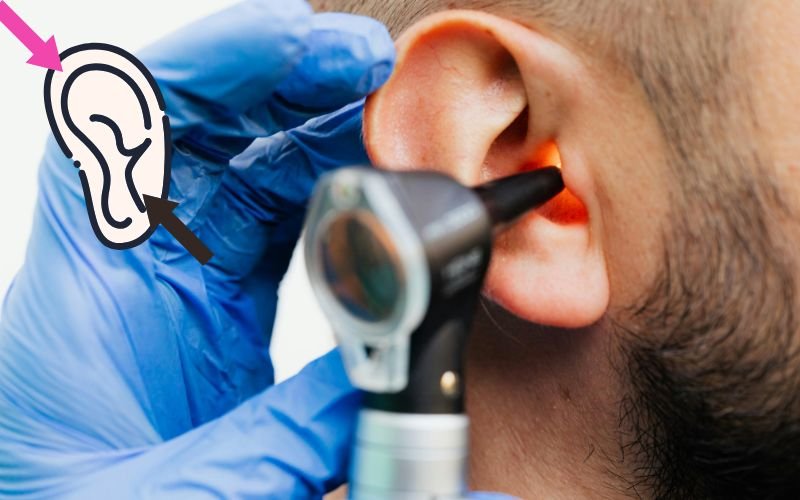MRM ENT surgery is an uncommon term; most people are unaware of this surgery and why it’s performed. This medical treatment is provided to patients with specific ear difficulties. This surgery is used to treat ear infections. But what does it really mean? What happens during the surgery in Delhi? Is it safe?
This guide by General Surgeon in Delhi covers every detail about the medical procedure of MRM ENT surgery. Read every essential aspect of MRM ENT surgery, including its purpose, process, safety details, and top-quality treatment locations.
What Is MRM Surgery?
The MRM surgery full form is Modified Radical Mastoidectomy. This is a type of ear surgery that helps to remove infection or disease from the mastoid bone. The mastoid is a part of the skull, located behind your ear. It contains small air spaces that can sometimes get infected.
When infections in the ear don’t go away with medicine, doctors may recommend MRM ENT surgery to stop the spread and protect hearing.
Why MRM ENT Surgery Is Needed?
Infections like chronic otitis media can damage the ear. If left untreated, the infection can spread to the bone and even to the brain. When this happens, normal ear surgery may not be enough. That’s when MRM ear surgery is needed.
Doctors perform MRM surgery ENT to:
- Remove infected tissue from the mastoid bone
- Preserve the hearing ability as much as possible
- Prevent the infection from spreading to other areas
- Reduce the risk of long-term complications
Ear and Mastoid Bone
To understand MRM surgery types, you first need to know how the ear works. The ear has three main parts:
- Outer ear (what you can see)
- Middle ear (contains the eardrum and small bones)
- Inner ear (helps with hearing and balance)
Behind the middle ear is the mastoid bone. This bone is full of air spaces. If the infection from the middle ear reaches the mastoid bone, it can damage the cells inside.
This is where MRM ENT surgery becomes essential. It clears out the infection and helps the ear heal.
Who Needs MRM ENT Surgery?
Not everyone with an ear infection will need surgery. But if the infection doesn’t go away or comes back often, your ENT doctor in Delhi suggest MRM surgery ENT.
Here are signs that MRM ear surgery might be necessary:
- Persistent ear discharge
- Hearing loss that doesn’t improve with medicine
- Recurring infections despite treatment
- Damage seen on a CT scan or X-ray
- Cholesteatoma (a growth in the middle ear that damages tissue)
Types of MRM Surgery ENT Specialists Perform
There are different MRM surgery types based on how severe the infection is and how much tissue needs to be removed. Your ENT surgeon in Delhi will choose the best method for your condition.
- Canal Wall Down Mastoidectomy (CWD)
This type removes the wall separating the ear canal from the mastoid. It offers good visibility for the surgeon and is useful for large infections. - Canal Wall Up Mastoidectomy (CWU)
In this method, the surgeon keeps the canal wall intact. It looks more natural and may help with better hearing outcomes, but it requires follow-up care. - Modified Radical Mastoidectomy (MRM)
This is a mix of both. The infected area is cleared while saving as much normal tissue as possible. It helps balance hearing, safety, and infection control.
Step-by-Step Breakdown: What Happens During MRM Surgery
When preparing for this surgery in Delhi, it helps to know what the surgery involves. Below are the MRM surgery steps your ENT doctor may follow:
1. Pre-Surgery Preparation
- You will undergo hearing tests and imaging scans.
- Doctors will check your health to make sure you’re fit for surgery.
2. Anesthesia
- You’ll receive general anesthesia so you sleep during the surgery.
3. Incision
- The surgeon makes a small cut behind the ear to reach the mastoid bone.
4. Cleaning the Mastoid
- Using a surgical drill, the infected air cells in the mastoid are carefully removed.
- If there is a cholesteatoma, it is also removed.
5. Reconstruction
- The surgeon may rebuild parts of the ear if needed.
- They may also insert a graft to help the healing process.
6. Closure
- The area is cleaned and closed with stitches.
- A bandage is placed over the ear.
Post-Surgery Care and Recovery
After MRM ENT surgery, recovery is important. You may need to stay in the hospital for a day. Here’s what the next steps look like:
- Pain management: Mild pain is normal. You’ll get medicine for relief.
- Ear cleaning: The doctor will clean the ear regularly to prevent infection.
- Hearing check: A hearing test may be done a few weeks later.
- Follow-ups: Regular visits ensure proper healing.
Complete healing may take several weeks. Your ENT surgeon in Delhi will guide you on what to avoid, such as getting water into the ear.
Advantages of Getting MRM ENT Surgery in Delhi
NCR has some of the top hospital and medical infrastructure in this country where Best ENT surgery hospital in Delhi offers:
- Skilled surgeons trained in advanced ear surgery
- Access to the latest equipment and operation theaters
- Lower cost compared to other cities or countries
- Better recovery support and post-surgery care
- Specialized hospitals focused on ENT procedures
When it comes to advanced MRM ENT surgery in Delhi, Primus Hospitals stands out. With a team of skilled ENT specialists, modern surgical equipment, and a strong focus on patient care, Primus offers reliable treatment for complex ear conditions.
Patients choosing Primus benefit from:
- Personalized treatment as per your diagnosis
- Transparent communication from doctors
- Safe and hygienic surgical environment
- Round-the-clock medical support
- Affordable ENT care packages
If you’re seeking the right care for your ear condition, trust our team at Primus Hospitals to guide you through every step—from diagnosis to full recovery.













